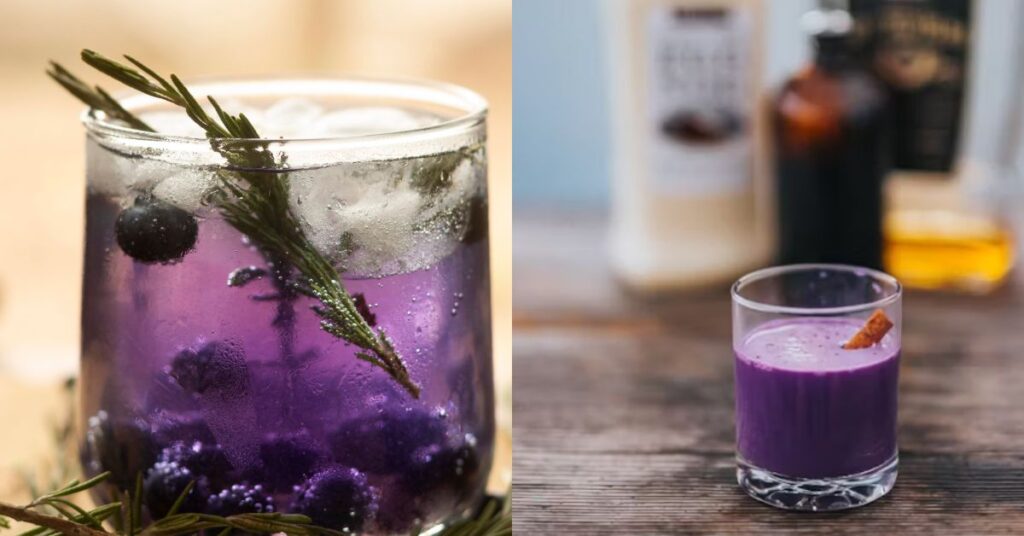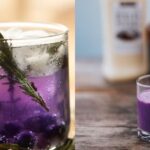If you’ve ever wondered what gives some desserts that vibrant violet hue and earthy-sweet flavor, the answer might be ube syrup. A concentrated, sweetened extract made from ube—the purple yam native to the Philippines—ube syrup is more than just a trend. It’s a cultural mainstay reimagined for global appeal. In this article, we break down everything from what ube syrup is, how it’s made, where it fits in today’s food scene, and why it’s emerging as both a nostalgic comfort and a culinary revelation. Whether you’re a chef, a café owner, or a curious foodie, this is your full guide.
What Exactly Is Ube Syrup?
Ube syrup is a thick, sweet, and vividly purple liquid created by combining mashed or juiced purple yam with sugar, water, and sometimes coconut milk or extracts for flavor. Though often confused with ube halaya (ube jam), syrup is far thinner in consistency and intended for drizzling, swirling, or mixing into other foods or beverages.
At its core, ube syrup serves as a bridge—between generations, between culinary traditions, and between old and new palates.
The Origins of Ube and Its Cultural Significance
Long before ube syrup became a social media darling, the root vegetable itself held an esteemed place in Filipino food history. Ube, which grows naturally in Southeast Asia, has been a staple ingredient in Filipino households for centuries. Often boiled and mashed into desserts, its popularity stretches back to pre-colonial times.
The introduction of sugarcane and coconut by Spanish colonists in the 16th century led to the birth of ube halaya, and with that came variants such as condensed ube syrup. Though more modern than halaya, syrup reflects the same foundational values: celebration, community, and richness—both in taste and heritage.
How Ube Syrup Is Made
Crafting quality ube syrup requires both tradition and technique. While home recipes often favor simplicity, commercial-grade syrup production demands a careful balance of texture, taste, and color.
Table: Basic Ube Syrup Ingredients and Roles
Ingredient
Mashed or Juiced Ube
Granulated Sugar
Water
Coconut Milk (optional)
Vanilla Extract (optional)
Citric Acid (as preservative, optional)
Each of these elements plays a specific role. Ube brings earthiness and pigment. Sugar stabilizes and preserves. Water thins. Coconut milk adds creaminess. Vanilla deepens the flavor. Citric acid maintains shelf stability without compromising taste.
What Does Ube Syrup Taste Like?
The flavor of this syrup is unlike anything else—subtly nutty, creamy, and sweet, with tones of vanilla and coconut. Think of it as a more grounded, earthy cousin to taro, yet with a silkier finish. When done right, the taste evokes nostalgia, even if it’s your first time trying it.
For the unfamiliar, it may resemble a cross between white chocolate and toasted coconut with a starchy undertone. That unique profile is what makes it so versatile.
Applications in Food and Drink
Ube syrup’s rise in global culinary circles has led to innovative applications that span the sweet and savory spectrum.
Table: Popular Uses for Ube Syrup Across Categories
Category
Beverages
Desserts
Baked Goods
Savory Dishes
Condiments
Examples per Category
Beverages:
Ube lattes, milk teas, smoothies, cocktails
Desserts:
Ice cream topping, shaved ice, parfait layers
Baked Goods:
Ube donuts, pancakes, waffles, macarons
Savory Dishes:
Glazes for meat, fusion sauces
Condiments:
Ube honey butter, compound syrups
It’s not just confined to cafés anymore. From Michelin-starred kitchens to food trucks, chefs are finding new ways to incorporate this syrup into Western and Asian menus alike.
Ube Syrup in Modern Culinary Trends
this syrup is more than a novelty; it’s now considered a fixture of fusion cuisine. As the global appetite grows for regional and heritage-based flavors, this syrup checks all the boxes: eye-catching, health-conscious, and versatile.
Food trend forecasters have noted the rise of “purple foods” as markers of anti-inflammatory properties and antioxidant richness. Ube, as a yam, is high in vitamins, fiber, and anthocyanins—the compound responsible for its color and potential anti-aging effects.
Its visual appeal, especially when captured in photos and videos, contributes heavily to its popularity in the age of Instagram and TikTok.
Is Ube Syrup Healthy?
Like many sweetened products, moderation is key. But there are nutritional points worth noting. Ube itself is a nutrient-dense tuber, and while the syrup does contain added sugars, it often carries trace benefits from its base ingredient.
Table: Nutritional Snapshot (per 1 tbsp of ube syrup)
Component
Calories: ~50
Sugar: ~11g
Vitamin C: Low
Fiber: Trace amounts
Antioxidants: Moderate (from anthocyanins)
When compared to traditional chocolate or caramel syrups, this syrup provides a slightly more fibrous and antioxidant-rich alternative, making it a better-for-you choice in moderation.
Homemade vs. Commercial Ube Syrup
There’s a clear divide in the market: artisanal vs. mass-produced.
Homemade Pros
- Full control of sweetness and ingredients
- No preservatives
- Richer taste
Commercial Pros
- Shelf-stable
- Consistent texture
- Cost-effective for large use
Depending on your intent—home use or business application—one may be better than the other.
Where to Find Ube Syrup
Today, ube syrup can be found in major grocery chains with international aisles, Asian supermarkets, and through online specialty food retailers. Small-batch makers are also offering it directly through e-commerce platforms.
For cafés or restaurants looking to add it to their menu, bulk food distributors now carry commercial-grade ube syrups that meet both flavor and safety standards.
The Business of Ube: A Growing Market
The global demand for ube-flavored products has turned it into a lucrative micro-industry. What began as a cultural treat is now a hot commodity across Europe, North America, and Australia.
Companies are investing in ube farms in the Philippines, building supply chains around ethical harvesting and export. Artisanal producers are getting in on the action too—using this syrup as a flagship offering in the growing “Filipino food wave.”
Ube Syrup and Sustainability
As more consumers grow environmentally conscious, so too must the products they love. Ube, as a root crop, is naturally low-impact—requiring minimal water and adaptable to varied soils.
Some syrup makers are now using organic sugar, local sourcing, and recyclable packaging to meet sustainability standards. Certifications such as “organic,” “non-GMO,” and “fair trade” are becoming increasingly common among premium brands.
Common Myths About Ube Syrup
Myth 1: All purple syrup is ube.
Not quite. Some products use purple sweet potato or taro but market themselves as ube. Always check labels.
Myth 2: this Syrup and ube halaya are interchangeable.
They’re not. Halaya is a thick jam, while syrup is pourable and used differently.
Myth 3: Ube–syrup is artificially colored.
While some brands do add food coloring, high-quality syrups rely on the natural pigmentation of the yam.
How to Make Ube Syrup at Home
Ingredients
- 1 cup grated ube
- 1 cup sugar
- ½ cup water
- 2 tbsp coconut milk (optional)
- ½ tsp vanilla extract
- ¼ tsp lemon juice or citric acid
Instructions
- Combine sugar and water in a pan, bring to a boil.
- Add grated ube and stir continuously.
- Lower heat and add coconut milk, vanilla, and citric acid.
- Simmer until thickened.
- Cool and strain for smoother texture.
Homemade syrup can last 7–10 days in a refrigerator.
Ube Syrup in Pop Culture
From Starbucks Philippines releasing ube lattes to independent bakeries crafting purple ube cheesecakes, this syrup has made its mark. Its aesthetic appeal makes it a favorite on Pinterest boards and food blogs, especially in the Gen Z and Millennial demographics.
Even fashion designers have taken note, mimicking ube’s hue in seasonal palettes, further reinforcing its cultural capital beyond just the kitchen.
Pairings and Flavor Combinations
Ube syrup works exceptionally well with:
- Coconut milk
- Matcha
- Black sesame
- Pandan
- Mango
- Cream cheese
- White chocolate
It also adds depth to cocktails like gin spritzers, rum-based drinks, and even coffee martinis.
The Future of Ube Syrup
The next five years could see this syrup in unexpected places—protein bars, energy drinks, even skincare. As the global flavor map expands, ingredients once confined to regional kitchens are now leading innovation. thise syrup, with its iconic look and layered taste, is poised to be more than a phase.
Expect to see more variations, including sugar-free, keto, or adaptogenic-infused versions, tailored to the wellness market.
Conclusion
thissyrup is a reflection of culinary evolution: deeply rooted in heritage, yet continuously reshaped by creativity and innovation. It represents the journey of Filipino culture onto the world stage, one drizzle at a time. Whether it’s a humble scoop on halo-halo or a swirl in a $9 latte in Manhattan, the essence remains—the purple yam, celebrated and shared.
FAQs
What is the shelf life of this syrup?
Commercial versions last up to 6 months unopened. Homemade syrup lasts 7–10 days in the fridge.
Can diabetics consume syrup?
Only in moderation. Look for sugar-free or monk fruit-sweetened options as safer alternatives.
What’s the difference between taro and Ube Syrup?
Taro is more floral and light, while ube is nuttier, richer, and visually deeper in color.
Is ube syrup vegan?
Most versions are vegan unless made with dairy-based condensed milk. Always check the ingredient label.
Can I use ube syrup in savory dishes?
Yes! It works well as a glaze for grilled meats or incorporated into sweet-savory sauces.







